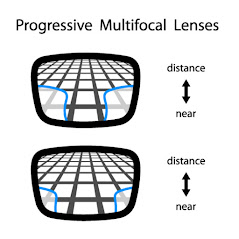How are progressive lenses
Progressive lenses Production combine three distinct prescriptions into a single lens. As a result, you are no longer required to use reading or distance-vision glasses. Progressive lenses require a little more effort to develop because they are much more intricate than ordinary. more lens are SINGLE VISION RX
How are progressive lenses created, then? Here is how it works generally:
Your pupillary distance, fitting height, pantoscopic tilt, wrap angle, vertex distance, and other parameters will all be measured by an optometrist. This will make it easier to plan out the various prescriptions for your lenses.
After that, machines assist in creating the lenses. The lenses will be formed to your measurements thanks to a laser marking throughout this process.
What Progressive Lenses Are
In essence, progressive lenses combine the functions of three different types of prescription lenses. This is so that prescription lenses can be divided into three categories: reading, intermediate, and distance. Let's briefly discuss each of these.
Distance: The upper portion of the lens that allows you to see further by simply looking up and out into the distance
Intermediate: The middle portion of the lens that lets you see things at a mid-range distance, such as your computer at work
Reading: The lower portion of the lens that helps with clarity close-up when reading, just by looking down
Your progressive lenses' assistance will vary depending on where you're gazing based on these three distinctive portions. The transition between the prescriptions is more gentle in progressive lenses, which are superior to regular bifocals in this regard. As a result, the hard-line transition present in the majority of bifocal lenses is absent. Single Vision Lenses
Whom They Are Intended For
While progressive lenses are an option for almost any eyeglass wearer willing to pay more, progressive lenses are particularly advantageous to a particular group of people. Presbyopia, commonly known as farsightedness, is the condition for which they were designed. Because progressive lenses only require one pair of glasses, this problem typically affects elderly persons.
Performing Measurements
When it comes to progressive lenses, getting proper measurements is more important than ever. To do so, an optician will take the time to measure where you are looking through your lenses and what you need to see relaxed and perfectly clear. This will allow you to get the perfect lenses for your vision.
Your prescription
Your optometrist or optician will determine what lens power you require to see effectively at a distance and when reading in order to determine the final prescription for your progressive lenses. Although you haven't yet selected a progressive lens design, the assessment of the reading power (ADD value) will have a significant impact on the design.
Fitting height, pupil distance, and many more things
You must put on a set of glasses that have already been adjusted in order to determine the proper height. Your optometrist will use a centration equipment to take a picture or a video of you while you're looking straight ahead. The optician can then measure precisely where you are gazing through the lenses using specialised software.
This way he gets measurements like:
Pupillary Distance (the distance between your eyes)
Fitting height (distance between pupils and the bottom of your lenses)
Pantoscopic Tilt (how much the frame sits tilted in your face)
Vertex distance (the distance between the lenses and your eyes)
Wrap angle (angle between both lenses)
This horizontal line's position in relation to the bottom of your lenses is indicated by the fitting height. For progressive lenses, it's crucial to check that there is enough room for all three prescriptions, especially the reading component.
Your vision could get fuzzy and your eyes could become tired due to a poor measurement. The lens's construction is the cause. The optician has zero tolerance in this centration process because there are clear zones and hazy zones in the lens. Your lenses will be in a different position after making eye movements to stare into the camera while not gazing straight ahead.
However, a qualified optician is aware of this and pays attention to these dangers. Once everything has been measured and a frame has been selected, the optometrist will talk to you about the various lens options. In general, you have a choice between custom lens designs and standard ones.
You will experience greater wearing comfort and will find it simpler to get used to the lenses thanks to the customised lens designs. This survey found that 82% of respondents preferred customised progressive lenses to traditional ones. However, it goes without saying that the price will increase the more specifically the lens is made for you. Here is a piece we wrote about the price of progressive lenses.
For More info Visit: GKB Optic Technologies



Comments
Post a Comment